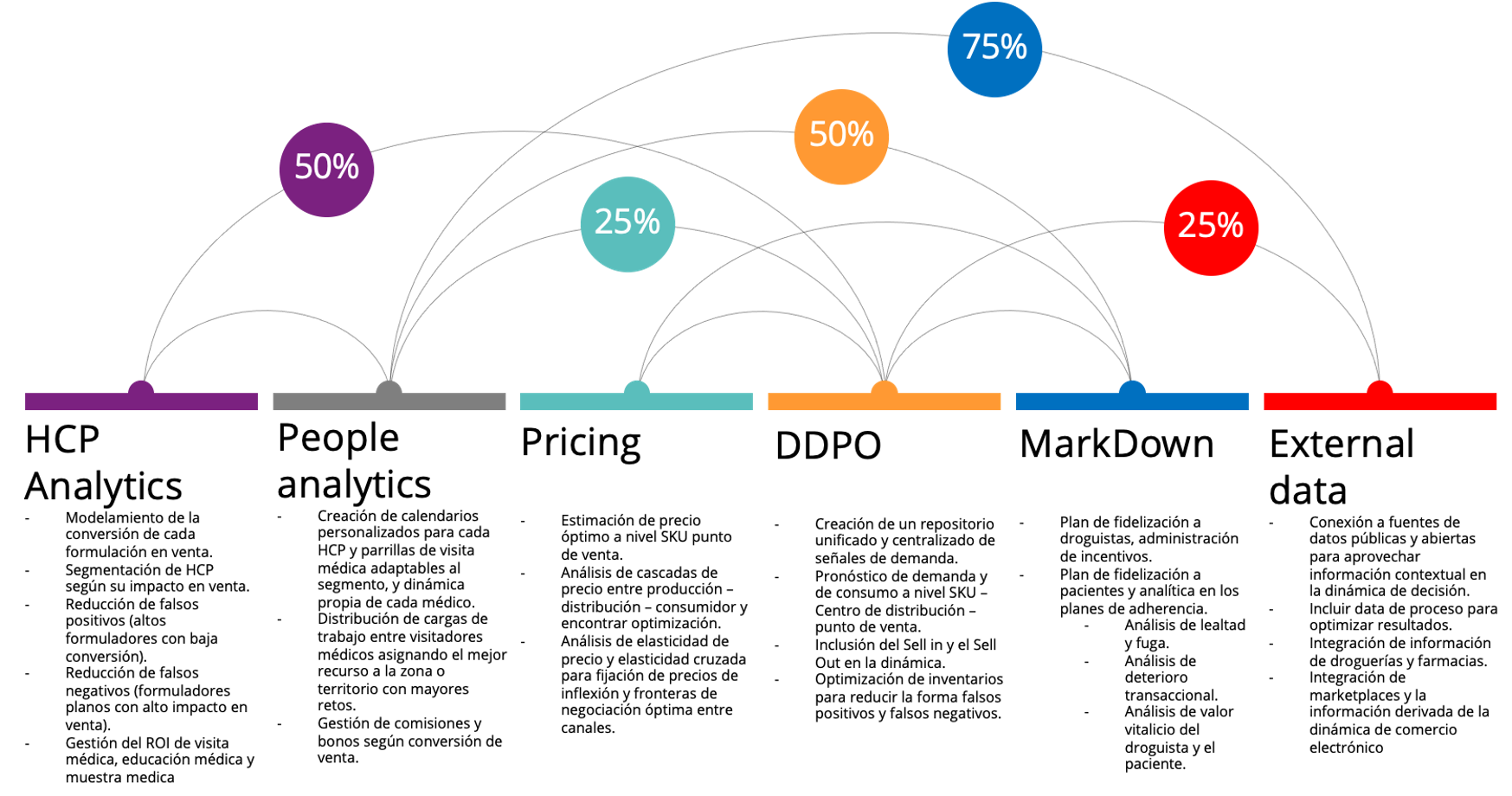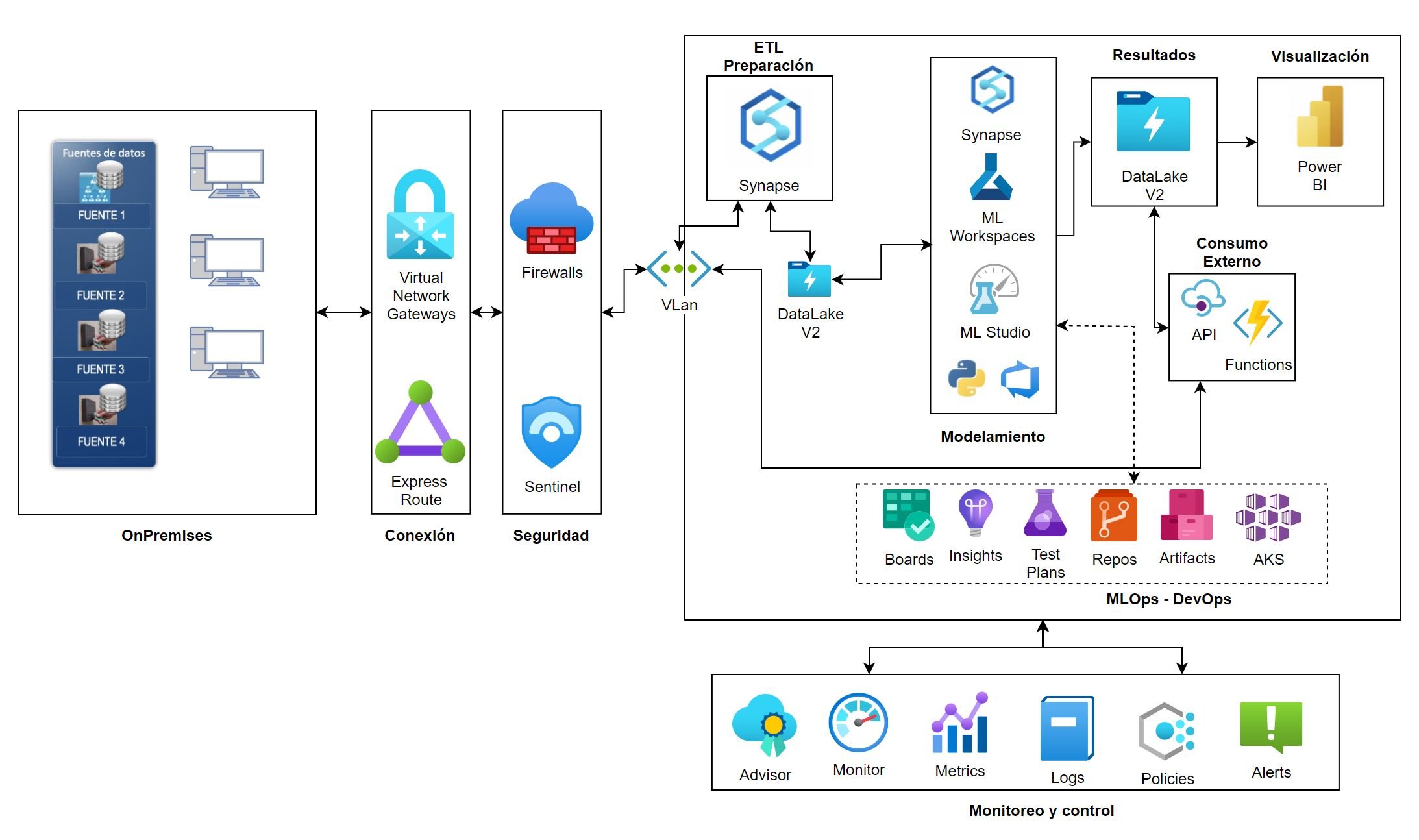The pharmaceutical sector has commercial and "go to market" challenges to overcome. Some use cases from data science that respond to these challenges are: Prescriber analytics, People Analytics, Pricing, Demand-Driven Planning & Optimization, MarkDown, Use of external data.
A use case is a design plan focused on the information user. It maps the path that data follows from the time it is collected until it becomes a high-value asset for the business. The chart below shows the main use cases in the commercial setting of the pharmaceutical industry:

For this blog, we will be working on the first of six use cases. One of the most representative ones when it comes to converting prescription to sales: HCP Analytics (Health Care Professional Analytics)
PRESCRIBER ANALYTICS:
This use case has a 50% correlation with DDPO (Demand-Driven Planning & Optimizaton). This indicates that increasing prescriptions without improving demand planning at the POS (point of sale) results in a productive deadlock. The physician will prescribe, but the user will not necessarily find the product in the pharmacy.
| Business objectives |
- Exploit market data to estimate ROI (return on investment) for activities linked to: medical sampling, ongoing medical education and medical visits
- Optimize the medical visit, organizing the order in which products are presented according to the physician's potential to prescribe them
- Georeferencing the physician's sphere of influence to know in which locations on the map the purchase of a product associated with the physician's prescription increases, by using algorithms, since there is usually no information on the prescription's journey
|
| Data integration |
- Sales-related information: Pharmacy sales at SKU level, reports on volume sales (boxes and tablets), value, market share. Geographic position of sales
- Prescription-related information: Prescription by physician and geographic location of prescription.
- Investment-related information: Investment per physician in medical samples, ongoing medical education, doctor's visits, etc.
Using data input and data integration techniques, a data model is developed. As part of SINNETIC’s philosophy, we call it a Common Data Model. This integration is supported by ETL and ELT processes and the result allows the information to be used in different analytics and reporting settings, reducing search, integration and cleansing time.
|
| Data analytics |
- GLM with LASSO regularization of parameters to breakdown the impact of each formulator on the volume sold
Bagging and Boosting Methods to integrate the models and estimate the ROI of each marketing activity on sales
|
| Consumption and visualization |
- Dashboards to alert changes in the prescription-to-sale ratio
- Georeferencing the point of prescription and the point of sale to analyze the prescription journey and understand funnels, bottlenecks or barriers that prevent prescriptions from turning into sales
- Customized medical visit plans for each prescriber, helping the medical visitor to organize the message and disseminate content relevant to each physician's needs
Simulator to estimate the degree of investment required to achieve the prescription and sales target for each HCP
|
It is evident that for the three layers of this use case, namely: 1. Data integration, 2. Data analytics and 3. Consumption and visualization, many technology architectures can be used for this process; here is an example using AZURE:

In this setting, we can see how data input is performed with Synapse to store it in the data lake. The analytical processes are carried out with Azure Machine Learning in ML Studio, and the information is consumed in Power Bi.
REFERENCE:
Gray, E. M., & Aronovich, R. (2016). Producing an ROI with a PCMH: patient-centered medical homes can deliver high-quality care and produce a healthy ROI for organizations that are willing to invest the time and effort required to plan for the transition and maintain the model. Healthcare Financial Management, 70(4), 74-80.
Jadczyk, T., Kiwic, O., Khandwalla, R. M., Grabowski, K., Rudawski, S., Magaczewski, P., ... & Henry, T. D. (2019). Feasibility of a voice-enabled automated platform for medical data collection: CardioCube. International journal of medical informatics, 129, 388-393.
Kolter, J. Z., & Ng, A. Y. (2009, June). Regularization and feature selection in least-squares temporal difference learning. In Proceedings of the 26th annual international conference on machine learning (pp. 521-528).
Wickramasingha, I., Elrewainy, A., Sobhy, M., & Sherif, S. S. (2020). Tensor Least Angle Regression for Sparse Representations of Multidimensional Signals. Neural Computation, 32(9), 1697-1732.